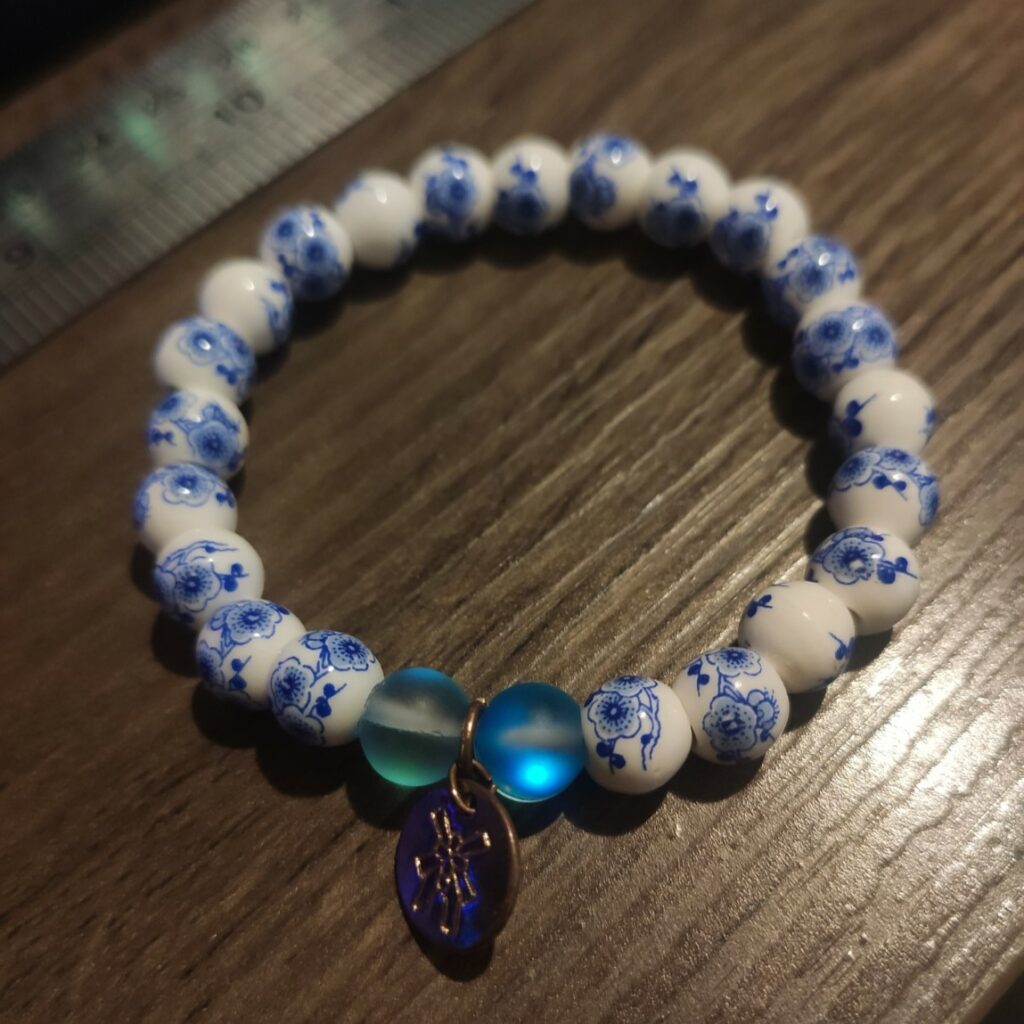Category: Obsessions
WHAT TOOK YA?
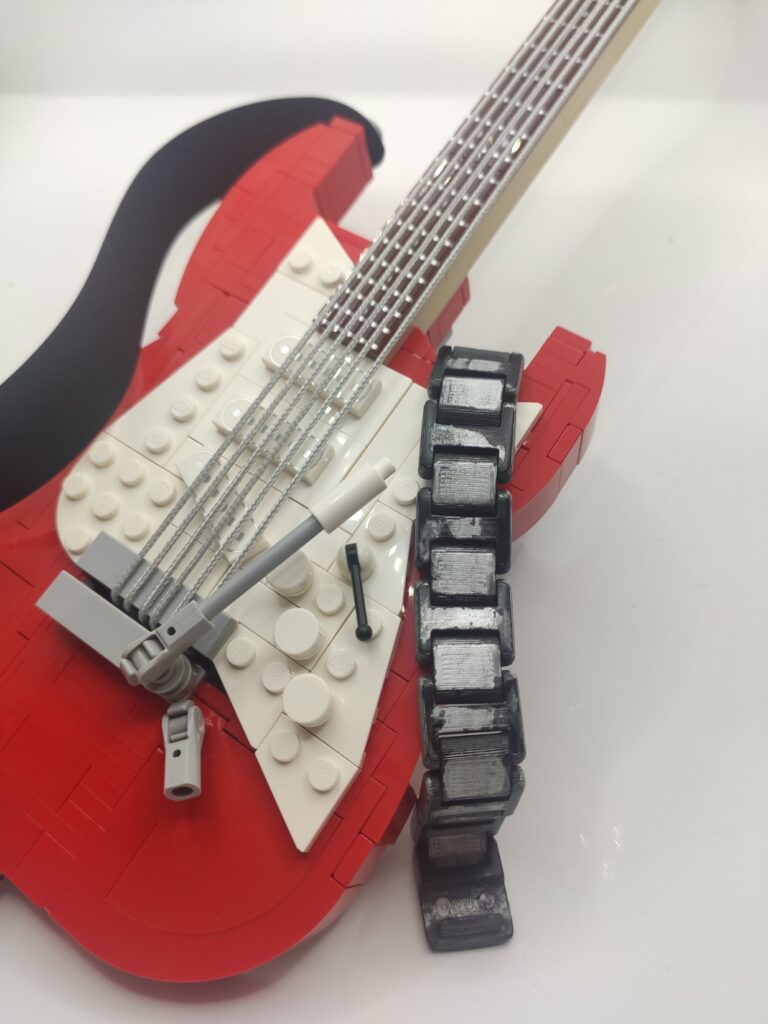 Seriously! In a previous post, some eons ago, I hinted that sometimes I 3D print jewelry. Not only did it take me said eons to finally sit down and start a blog post about this, the whole process of designing and 3D printing bracelets itself is also something of which the Dutch would say, “you can’t go over one night of ice” Although… It should be noted that in general the Dutch don’t use English for their proverbs and that most Dutch understand that Dutch proverbs translated to English don’t make a whole lot of sense. But I digress…
Seriously! In a previous post, some eons ago, I hinted that sometimes I 3D print jewelry. Not only did it take me said eons to finally sit down and start a blog post about this, the whole process of designing and 3D printing bracelets itself is also something of which the Dutch would say, “you can’t go over one night of ice” Although… It should be noted that in general the Dutch don’t use English for their proverbs and that most Dutch understand that Dutch proverbs translated to English don’t make a whole lot of sense. But I digress…
A few years ago now I saw a video on YouTube about using a 3D printer to create hinges that were “print in place” (or PIP as it is sometimes called). It’s a term used to describe 3D prints that are a moveable, or flexible mechanism that doesn’t require any assembly after printing. They can be used straight from the printer. This is a rather unique manufacturing technique that can only be accomplished with additive manufacturing techniques. I quickly realiz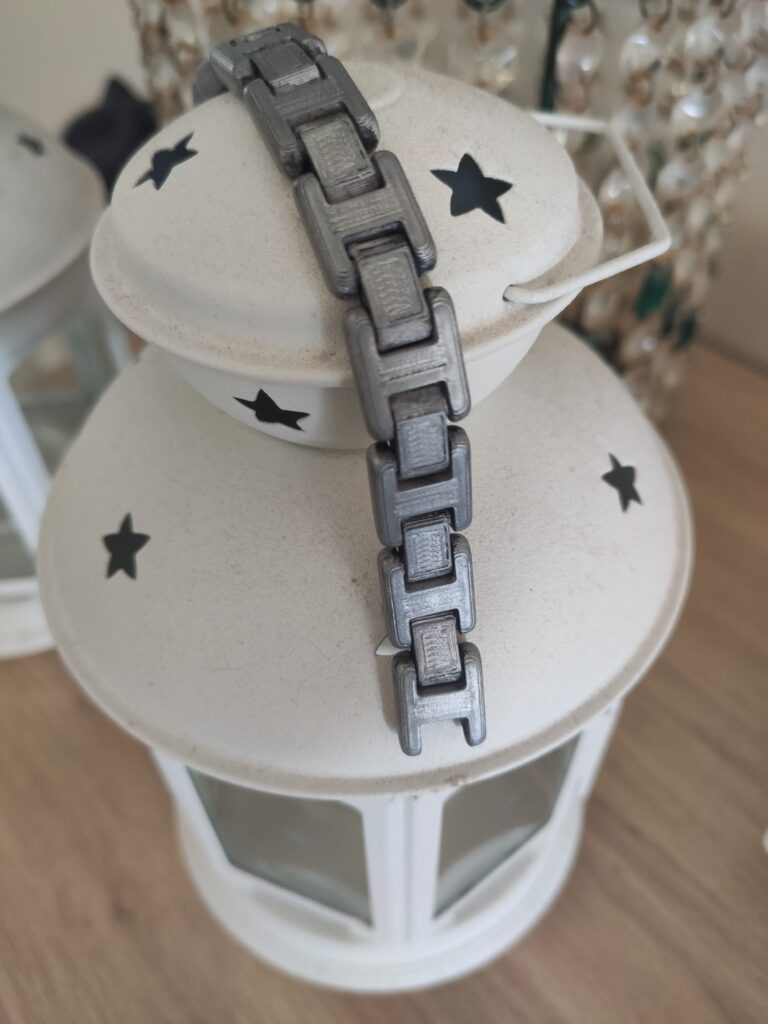 ed that you can make chains this way. So I set out to do just that. I won’t make you sit through all the boring details, but this is harder than you think… At least, I found it much harder than I had hoped it would be. However, I am nothing if not stubborn and after a few months of tinkering in a CAD program and printing a bag full of prototypes that failed in various (sometimes spectacularly hilarious) ways… Let’s just say I learned a lot!
ed that you can make chains this way. So I set out to do just that. I won’t make you sit through all the boring details, but this is harder than you think… At least, I found it much harder than I had hoped it would be. However, I am nothing if not stubborn and after a few months of tinkering in a CAD program and printing a bag full of prototypes that failed in various (sometimes spectacularly hilarious) ways… Let’s just say I learned a lot!
I had to overcome plastic fatigue, printer artifacts, size constraints and a slew of other boring crap. But these days I am happy to report I can reliably print a rather sturdy, reasonably decent looking and completely cost-ineffective bracelet. I have done this in various configurations and the design I ended up with means that I can even print multi-color versions even though I don’t own a printer that can print in more than one color.
I MAKE THINGS!!
Actually… This is not a make, it’s a repair. Daughter dear didn’t like the elastic (it was that floss stuff). I said “What’s wrong with it?” while stretching the bracelet and then beads went flying. Clearly that wasn’t the strongest elastic. Well it is now!
Now is probably a good time to explain that besides being a voice on the radio, and a collector of playing cards, I make stuff. Synchronized to music Christmas lights, 3D printed things, painfully bad dad jokes… And Bracelets. Yeah yeah, I just said this is a repair, I just restrung. it. But… I make originals as well. Sometimes I even 3D print bracelets. More on that later.
Master of Illusion
I have a game for my trusty old Nintendo DS – yes I still have mine, don’t judge! – that puts the player in the role of magician “having” to learn tricks. Of course I own that game, I wouldn’t expect anything else from me. You can read all about it here: https://en.wikipedia.org/wiki/Master_of_Illusion_(video_game)
One of these days I will finally tell the story of why I think the u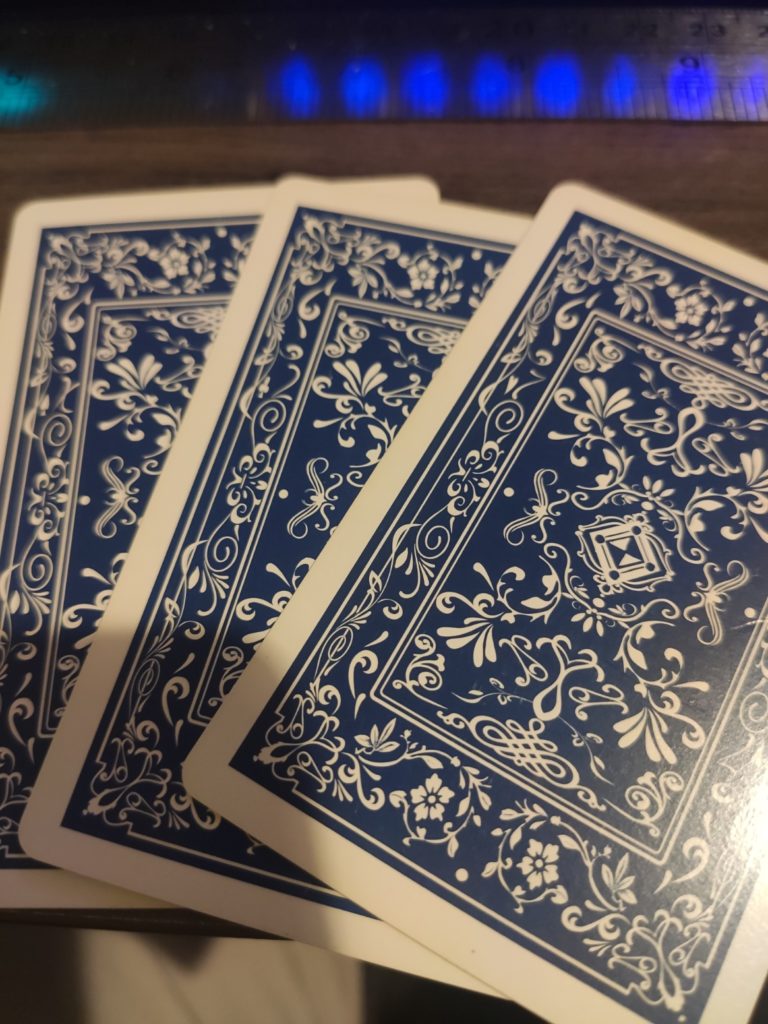 niverse has been dropping hints I should have been a magician and not a product manager, or radio host, or journalist, or bartender, or software developer, or CTO, or musician (all jobs I have held) but I digress
niverse has been dropping hints I should have been a magician and not a product manager, or radio host, or journalist, or bartender, or software developer, or CTO, or musician (all jobs I have held) but I digress
The game comes with its own deck of card, and I also still have that. In near perfect condition, I might add. It was actually the very first marked deck of cards I ever owned. I forgot all about that feature! The marking is what is called a reader system, so the values of the face are simply written on the back. If you don’t know it, you will not see it. Once you do, you can’t unsee it.
The cards are made by Tenyo who also produced the game. It’s ironic that Nintendo didn’t produce this themselves as (I was reminded recently) the company got started as a producer of playing cards. In 1889, Japanese businessman Fusajirō Yamauchi founded Nintendo as Nintendo Koppai, a card manufacturer on Shōmen-dōri street in Kyoto. From these humble beginnings, it grew into one of Japan’s largest playing card companies, before pivoting into other products like toys and electronics. So in essence this game brought them full circle.
About the cards
There is otherwise remarkably little to say about these cards, which I guess is really something you want in cards used to perform magic. They shouldn’t be the star of the show, should not draw attention to themselves (especially when marked). It’s cheap stock like you get in dollar-store cards. They are bridge sized which is not everyone’s cup of tea, but fairly standard outside the US.
That’s all she wrote, really. It comes in a nice Nintendo branded box and they have held up well in the 16 years I owned them, especially considering they moved from the United States to Australia. Let me know in the comments if you can decipher the markings!
40,000 decks – Missing!
You heard that right! In the 1970’s there was a casino in Vegas that has since closed its doors. The name of the place was Jerry’s Nugget and the story goes that they had 40,000 decks of cards printed that somehow never got used and ended up in storage. Some eccentric bastard bought the lot of them and now these cards are some of the most sought after playing cards in the world. Single decks are fetching upwards of $500 USD. Yup, FIVEHUNDRED DOLLARS!
READ A LONG STORY ABOUT THESE CARDS HERE
And I thought that my $50 dollar Stranger and Stranger deck was expensive Ha! Ha! Look at this on Ebay… That’s a card collection containing a dozen of these decks and it has a “Buy Now” price of $11,000 USD. Holy Schmokes!
I am still working on memorizing cards in seemingly random order. I am still not very good at it, so don’t expect me on Australia’s Got Talent any. time. soon! However, I found something new that isn’t nearly as difficult. Not as versatile perhaps, but not as taxing on the old noggin. It’s a stack in which any card’s position can be calculated. But unlike some card stacks (I am looking at you Si Stebbins) this one still appears random to your spectator. It’s actually quite clever!
Here, let me give you the first 10 cards: 10C, 7H, 4S, AD, JD, 6C, 7C, 9S, 6D, AC. Besides there being four clubs in the first ten cards (that’s a bit suspish) it starts with 10-7-4-A which is “three apart” . It doesn’t help that those cards are in CHaSeD order (Clubs, Hearts, Spades, Diamond). Luckily, the pattern stops right there. There are a couple of very obvious signs of the cards being stacked but more about this later…
HARDING
This way of ordering cards is called the Bart Harding Stack. It is said to have originated somewhere, sometime around 1962 but, that is about as far as I have gotten with my research. Most online resources simply regurgitate the same pamphlet that explains the stack and that’s it. You can find a copy HERE. Because that 2-pager does a fine job explaining what is going on, I can be brief. Basically you “memorize” a virtual deck in near-new order. Clubs, hearts spades and diamonds from ace through to king. Each king thus sits in a position that is a multiple of 13. Each card is easy to find knowing where the kings are. You simply add or subtract the number to get you to the closest king. . If you need to know where the 10 of hearts is you simply have to remember that the king of hearts is in position 26. The 10 is three down from the king, so 23. Likewise the 6 of spades is six up from the king of hearts so 32.
To find that card (6 of spades) in the deck that is actually in your hands (you know, the stacked deck) you reverse the position in the virtual (imaginary) deck to get 23. With a few exceptions each card can be found that way. The 3 of diamonds is in position 42 in your “sorted” deck and so 24 in your stack.
Sometimes of course, if you reverse a number you get something that is larger than 52. In that case you subtract 5 from the first digit and add 5 to the second digit. 18 becomes 81. 8 minus 5 equals 3 and 1 plus 5 equals 6. The 6 of hearts is in position 36 in your stack.
If the number in your virtual deck is below 10 (single digit in other words), just add a zero. The 2 of clubs is in position 20.
Exceptions?
These are the only rules you have to remember. Psych! Here are the exceptions to the rule. The six and seven of clubs are in position 6 and 7 in the stack just like in your ordered (virtual) deck. This is because you can’t reverse those numbers into a number lower than 52. Not without clashing with another card that should be in the same position. 6 (for the 6 of clubs) becomes 06, in reverse that would be 60. That is above 52 so you sub 5 from the first digit to get 1 and add 5 to the second digit to get 5. the 15th position however is for the QD because 51 reversed is also 15. the 7C would clash with the KD.
The ace of spades stays in position because 27 in reverse is 72 and 7 minus 5 equals 2 while 2 PLUS 5 equals 7 to get right back to 27.
Also, the 3 of hearts (16).
And the 5 of diamond (44), and all the other numbers that are doubles (11, 22, 33).
There are a few drawbacks…
The ace and jack of the same suit are always next to each other. So too are the two and queen of the same suit. People familiar with stacked decks might recognise this. Unlike the Aronson stack there are no built-in poker hands, that’s a bit of a bummer. To be fair though, if you are better at adding and subtracting numbers in your head than you are at memorising seemingly random sequences, this may well be for you. I suck at both so… Woe is me!
PS: As far as I know there is no easy way to organise cards into this stack.Boo!
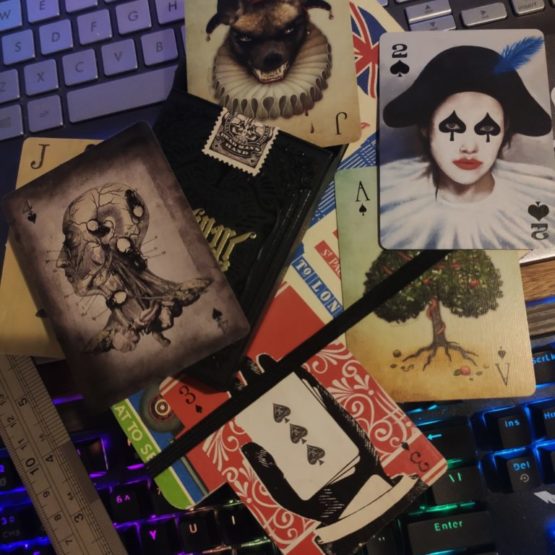
Stranger & Stranger
There is something oddly unsettling (but also very cool) about a deck of cards in which not a single card shares any design patterns… Look at the photo to the left. All of those cards are spades and all of them belong to the same deck.
And the latter you can only tell because the backs are the same. As weird as this feels, it’s exactly what design firm Stranger & Stranger did when they did a colab with Art of Play. When you take these out of the box, you aren’t just grabbing a pack of cards. You are opening a case with 54 artworks. You pay a hefty price for the privilege (at least you do here in Australia) but look at them, why wouldn’t you?
Ultimate Deck
This breaks all the rules! There is a pantomime, and a tree, and is that an acupuncture chart? It’s a bold move… Playability is out the door! But then, you wouldn’t take this to your bridge club. God forbid uncle Bob would spill his Tanqueray and OJ on these. This deck of cards is a convo starter, nobody in their right mind would actually use these, right? You look at these cards. And then you smack anyone that tries to touch them without gloves on.
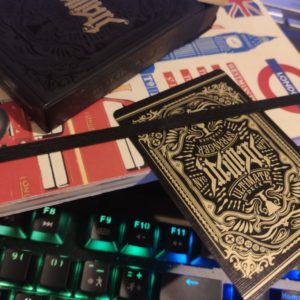
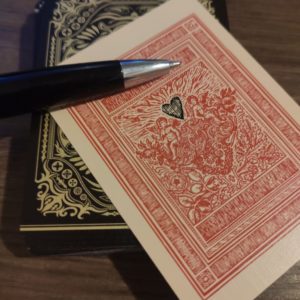
Technicalities…
The Ultimate Deck was designed by Stranger & Stranger for Art of Play and printed by USPCC. It’s available from the Art of Play site (link above) for $25 US. International shipping starts at $11.75 US. That makes the total in Outback dollars $55.60 against the current (at the time of writing) exchange rate. If you’d rather shop locally, and you should support local business, I can suggest Shuffler, Piper Magic or The Maker – Hobart, which happens to be a sustainable clothing store that also happens to sell playing cards. Because, why not?
If you are not in Australia, sorry but you are on you are on your own.
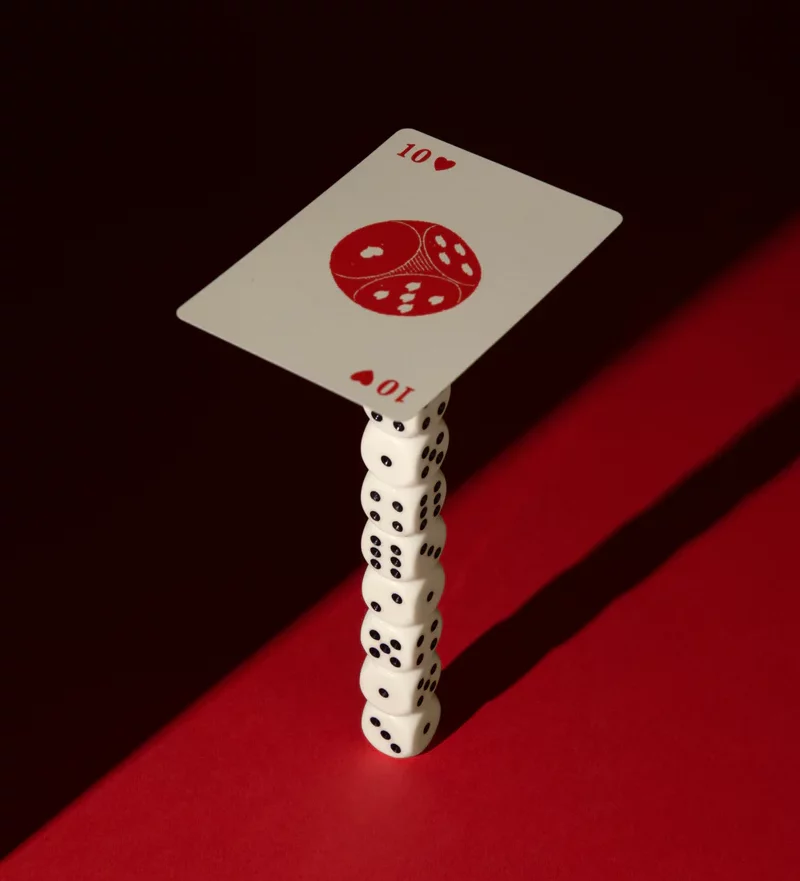
You know you want it!
In normal reviews you would now be told what you already know, that the card stock is excellent, that it feels fantastic in your hands… For magicians, that these are traditionally cut so they faro like crazy. But you aren’t ever going to use these! Just buy them! It’s like a coffee table book for card nerds…
THE END.
My favorite company to hate is no more…. ahhhh!
CardCutz made some funky cards. Some designs worked really well, others totally did not. I own a few of them. Worx, I still hate that design… Neoteric, Awesomely fun… Deckade, instantly dated by the back design containing the number 2020 – A year nobody wants to remember anyway. Besides the Worx deck, which simply doesn’t (work, that is) a lot of their cards seem to be 80’s inspired judging by the combination of neons and pastels. It’s hard to know what demographic they were going for with their original designs, if any…
Incidentally, I never actually ordered any of their originals. I got those as freebies with other orders. That’s telling I guess, if you give away your limited editions. That makes no sense! Cardcutz released 19 original designs over 3 years. Each of them seem to come in a limited run of 2500, so that is a total of 47,500 decks of cards. That is a lot of cardboard! I wouldn’t know how to move that quantity of playing cards either…I truly think that they grossly overestimated how popular these cards would be… Never mind that these are printed by USPCC on crushed stock, which should have move monkeys salivate. That stuff is glorious! Don’t believe me? Order a deck of Bicycle Elites (exclusive to Penguin Magic). You will thank me later!
Anywho, if you go to the CardCutz web site now, all you will see is a gallery of their designs, which you can’t buy from them because they sold out. A “Contact Us” button which simply goes to an email address and a link to findcards.com, where you will see that plenty of places around the world still stock their cards. But the price is not going up so, again, that should tell you something about how ill-fated the endeavour that was CardCutz really was.
I think it was a bum move to make Australians (where CardCutz originates) pay exorbitant shipping by moving your operations to the US, but I don’t wish any kind of bad luck on anyone… So good luck in your next adventure!
PS.
If that sounded insincere after my last tirade about this company, it isn’t. Some of the CardCutz designs were good. I would have thought there was a market for them. I think, much like myself, that the principals of the outfit overestimated demand. I was initially very excited to see an Australian company enter the playing card space… Too bad, it didn’t work out.
I like (am obsessed with) playing cards. I have said this before, I don’t know that I recall what came first magic or cards… Doesn’t really matter, I guess. I really like playing cards and I really like magic. The “pick a card” kind, not the “I am going to have you possessed by the spawn of my demon child” kind. The latter might come in handier than being able to guess someone’s card, but it’s so messy. You need cauldrons and the toe nails of the pope’s bastard son…
One of the things I have been playing with lately is stacks. That is the concept of being able to perform certain feats by virtue of knowing the order the cards are in. That sounds simple enough but it’s goddamn hard! In order to not have a spectator cotton on to the fact that the card are in a specific order, you have to make that order hard to recognize. So no, red-black-red-black-red-black. Or all the odd cards on one side and the even cards on the other. Actually, that may work… never mind. Problematically the harder you make it for a spectator to figure out, the harder it becomes for you to remember. Here is a random part of a stack I am trying to commit to memory at the moment: 6S, KS, 9H, 2S, 3C, 6H 10H, 4S, JD
See, there is no discernable pattern there. And there is 43 more where that came from. Granted there are quite a few magic effects created that require a stack but don’t require the performer to memorize it. That same stack I am studying now has two royal flushes built into it and you would never notice. All I have to do is remember where they start and how many hands to deal (The royal flush in hearts is for a 4- and the one in spades is for a 5-handed game). There comes a point though that you would want to use that stack for the ultimate trick. You think, just think of a card. You tell me what it is, I shuffle and *BOOM* your card is at the top. To do that I need to know the location of all 52 cards.
And I suck at remembering things! There are certain facts that I can easily remember… The fact that three out of four nines in this particular stack are preceded by a two. Great! But they are not the same number of cards apart and because I don’t know that distance, it doesn’t help me. No, there comes a point where I just have to commit this to memory. But how? I have been starting at these cards for a week and didn’t get much further than knowing that the JS is the first card. What we need here is mnemonics!
Luckily I stumbled upon a 2014 book by Geoff Williams. It’s called “The Aronson Stack For Everybody” – There, now you finally know what card-order I have been talking about. Simon Aronson devised this stack sometime in the 1970s (Geoff says 1976) a short time before Juan Tamariz came up with the infamous (among people into card tricks anyway) Mnemonica stack. Which, incidentally isn’t any easier to memorize than the Aronson stack, despite its name…
Geoff, in his book, describes a simple mnemonics system to more easily memorize the order of the cards. It isn’t particularly revolutionary but it was designed specifically around memorizing cards and the Aronson stack in particular. And in 70-odd pages he does a brilliant job of putting you well on your way to doing the impossible — Memorizing 52 cards in seemingly random order. Given that a large portion of the essay is dedicated to actual pictures of the mnemonic “peg words” he came up with (and some of them are truly nightmare inducing) this is about the quickest introduction to memory systems you can hope to find.
So how does it work?
For each card in the deck there are 2 word. One word describes the position in the stack, the other the value and suit of the card. The first card in the stack, “TOE JET” is the jack of spades. The practice and study aids in the book all use Geoff’s list of words, but you can come up with your own (as I did) if certain words don’t resonate with you. As Williams describes, it’s your brain! It needs to work for you!
You assign consonants to numbers and use these to represent numbers/positions in the deck. Single digits get one consonant, and double digit numbers get 2. T stands for one, N stands for 2, M stands for 3, R for 4. You now add vowels to make a word. For single digit numbers there is no second consonant and that is how the first card of the deck is “Toe”. This is followed by No, Me, Ray, Eel, Goo, Key, Fay, Pee – And there you have 1 through 9.
In Geoff’s book “No” was “Knee”. I found this to be extremely confusing. K is the letter that represents 7, but appears in the peg word as a silent letter for 3 values — Knee (2) , Knob (29), Knife (28). I replaced these with No, Nap and Naff. All these break Geoff’s rule that peg words need to be a tangible object.
Numbers and Letters
Now you have the places in the deck, you do the same for value and suit. The letters for values are T=1, N=2, M=3, R, L, G, K, F, P, S, J=Jack and H=Queen. That’s one through 12. The king is simply represented by its suit. So the king of spades is simply “SPADE”. Suits are T=Spades, N=Hearts, M, Clubs and R = Diamonds. For each card you take the consonant for value and the one for suit and make up a word with those. Ace of spades thusly becomes: Ace = 1 = T, Spades = 1 = T, combined this becomes TT. make a simple word with that and you might get “tit”. If body ink instead of a vulgar word for a woman’s breast is more your thing, you could use “tat”. If you are into Egyptian history, perhaps “tut”. The ace of spades in the Aronson stack sits in position 6 in the deck… “Goo Tit”
Each card gets two words. “Mom Jam” is the jack of clubs in position 33. 3 = M, so MM for 33. J for jack and M for clubs. With the letter combination MM JM you get “Mom Jam” but it could equally be “Mime Jim”. A few more… Nap rain, Man Sore, Mug Jar, Muff Sin, Tag Foam, Tick Mat.
Bit weird, huh?
There are a few oddities with the suggestions from “The Aronson Stack For Everybody”. I already mentioned the use of the silent K. I replaced all those words. Nap used to be Knob (29). That also had the issue of being the only word using a B instead of a P for 9. Nap, removing that silent K also removes the need to memorize an exception to P = 9. The book also uses K and C interchangeably because, as the author argues, they sound the same. I guess Geoff has never traveled to Cincinnati or used cinnamon in his baking. I just write all words starting with a C with a K instead… Because that’s what the kool kids do. I left words ending in CK alone.
Lastly I replaced most words that had multiple syllables in the original essay.
Does it work?
This is most definitely better than trying to brute force memorizing things. Within a few days of playing with the peg words I am really beginning to see a big difference in being able to memorize portions of the stack. I am nowhere near proficient, but I can get (however slowly) to a card value from a stack position or to a stack position from a card value for about half of the deck. There are still word combos that just don’t work well for me. “Nose Light” (Position 20 – 5 of spades) Just doesn’t want to come to me… But overall the method in Geoff’s book has been a great help. And to think this has been around since 2014. Goo tit see for yourself!
Look what I just ordered! I don’t think I need 12 packs of the same exact cards…
But wait, maybe I do. Yeah I do!
 Amazon decided that they would start selling Bicycle playing cards by the brick-load. It’s what other people that are not into cards call a dozen. Also, they are not 12 of the same packs… They are six and six, you know… Six to one, half a dozen… like that. Anyway!
Amazon decided that they would start selling Bicycle playing cards by the brick-load. It’s what other people that are not into cards call a dozen. Also, they are not 12 of the same packs… They are six and six, you know… Six to one, half a dozen… like that. Anyway!
That link above is NOT an affiliate link. I just want to pass on the news. If you reside in Oz, you can now buy (for however long Amazon decides) GOOD cards at a the price of crappy K-Mart brand paste-boards.
$47.87 (weird exchange rates be damned) for the brick is $3.99 per deck of cards.
Honestly – Go buy now! Free next day delivery with Prime!
Cards are the ultimate fidget toy… And because you will destroy them (it’s just cardboard after all) as soon as you take them from the box… You DO need 12 packs! You can fanx me later! These are not collectors items of any sort. To be honest, it’s probably just stock from the old factory that USPCC is trying to get rid of. So, if you destroy them, oh well!
She knows she got everythingThat a woman needs to get a man, yeah, yeahHow can she lose with the stuff she useThirty-six, twenty-four, thirty-six oh what a winning hand
